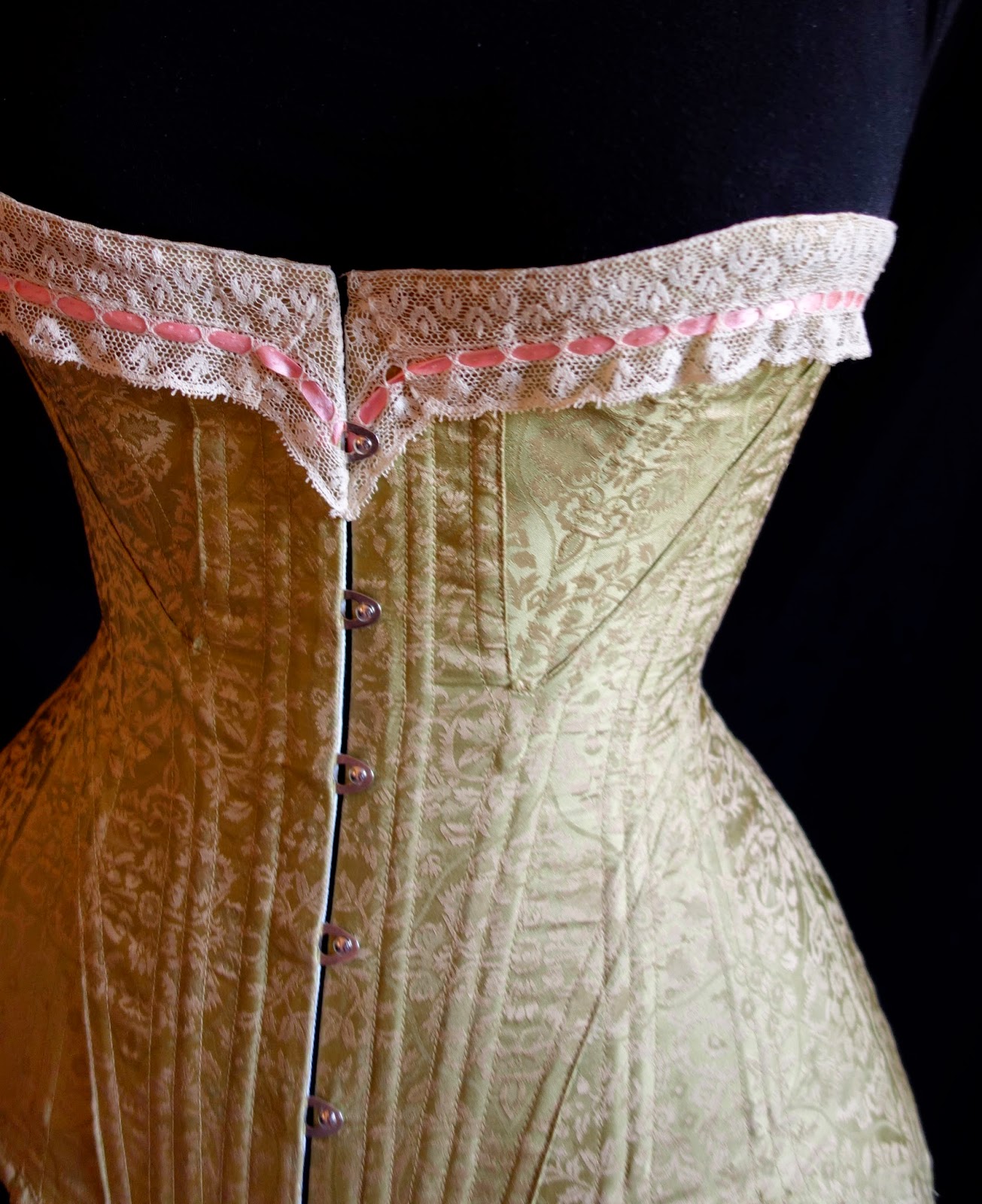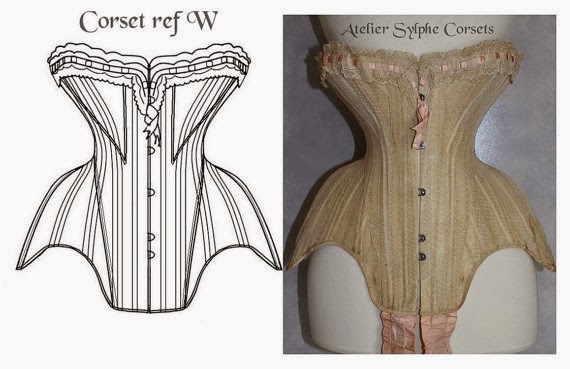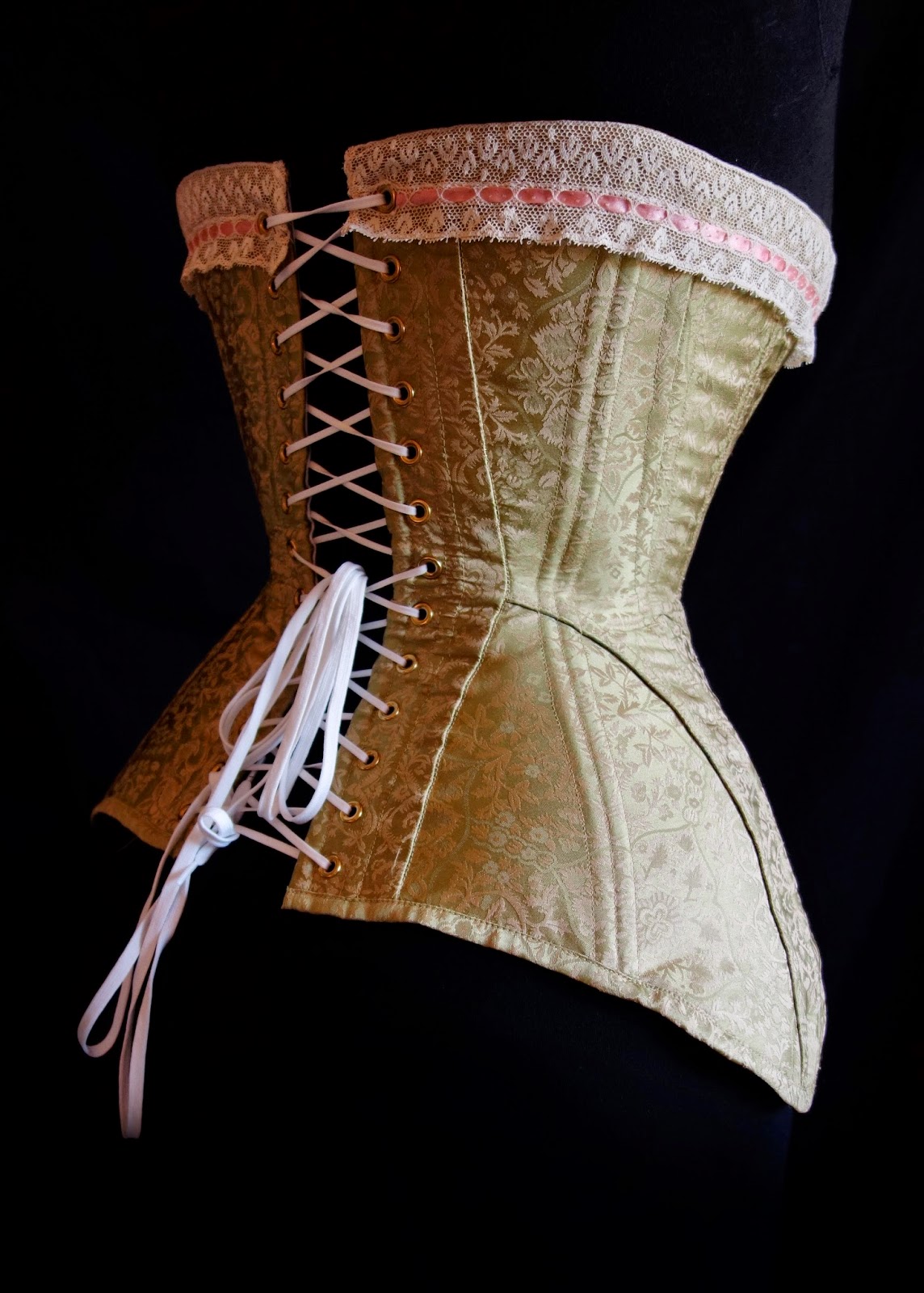There aren't a lot of instructions included with these patterns - just some notes about the corset materials and measurements, plus a page of diagrams showing the construction method for the seams. But for me, that was plenty, and I didn't have any trouble with assembly since I have made a number of corsets in the past. However, if you are new to corsetry, the pattern designer gives you links to several of her incredibly helpful online tutorials, like this one showing you how to set in bust gores. She also provided about 20 additional photos in an online download showing the original corset from every angle imaginable, both inside and out. I really loved that!
The pattern itself is beautifully drawn and very accurate when assembled. My only tiny complaint is that the boning length was not marked on the channels in this pattern, and since it appears that some of the bones in the original were shorter than their channels, it would have been nice to know exactly where they ended. Another thing that I wanted to point out is that different pieces of the pattern have different seam allowance widths, which I found to be a little confusing at times if I wasn't paying close attention to the pattern after I cut out my fabric pieces. Personally, I think it would have been easier for me to cut down the paper pattern to the exact measurement of each piece and then draw my own more standard seam allowances, but that is easy enough to do on you own if you aren't used to the specialized seam allowances that are common in corsetry. I really appreciate how accurate the designer was by including information like this in regards to selvages, but unfortunately, it was a little over my skill level since there were no written instructions specifically telling me how to make each seam for each piece. But I think advanced corsetmakers would love it, and it's simple to change for the rest of us.
I made my corset with a layer of coutil and a layer of silk brocade treated as one. There are boning casings on the inside of the corset, and it is boned with spiral steel. I built my version almost exactly like I made my 1910's corset. My favorite part of this project was finding some beautiful antique lace with silk ribbon beading for the top of the corset. Good lace is so hard to find, but such a wonderful treat when you stumble across the perfect piece.
I did not alter the proportion of the bust/waist/hips on this corset at all, but I did enlarge it by a few inches just by making slightly smaller selvages on a few pieces and adding a bit to the CF and CB edges. I also added 1" to the length of the torso since I am long waisted and have to use this adjustment on almost everything that I make. The only other change that I ended up making is to cut down the length of the bones in the front so that they don't go all the way to the bottom edge of the corset. During the final fitting, I discovered that the bones dug into my legs when a sat down, so it was much more comfortable to raise them a bit, and it didn't change the shape of the corset at all.
I was a little disappointed at first that my corset didn't create the extreme waspy shape that you see in the original, but I think I have finally accepted that corsets can only do so much. There are some body types that are more naturally suited for that sort of exaggerated hourglass look (I'm looking at you, Beyond the Automobile!), and I'm sure years of waist training would probably help too, but even the best corset pattern in the world can't work a miracle on an average modern body. But this pattern still creates a gorgeous shape, is comfortable to wear, and I'm thrilled with the final results! I definitely recommend this corset pattern to experienced corsetmakers or anyone who is ready to "level up" a bit. I thoroughly enjoyed making it, and I hope I get a chance to try out more of the Atelier Sylphe corset patterns in the future.





























